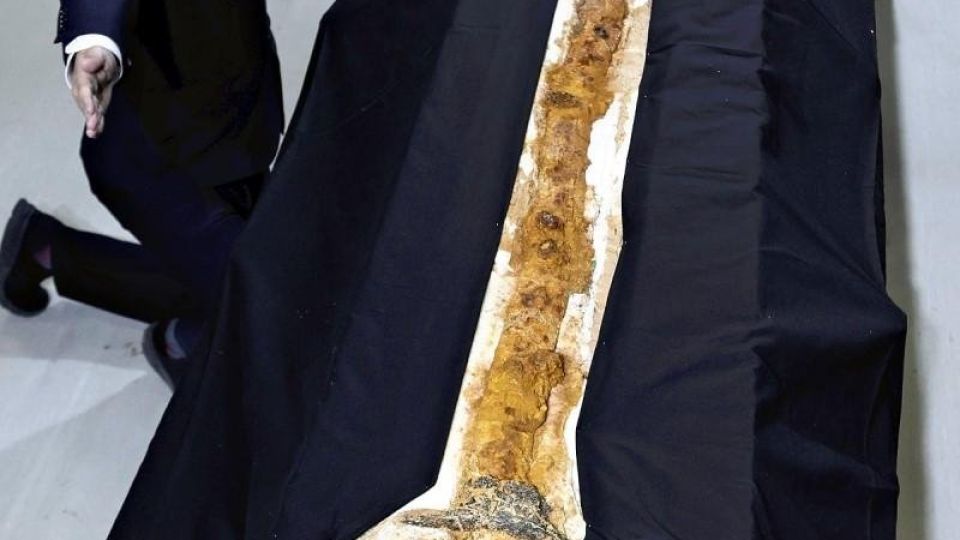March 28, 2024
TOKYO – The handle of the nation’s largest iron sword, excavated from the Tomio Maruyama Tumulus in Nara last year, has the characteristics of both a “katana” single-edged sword and a “ken,” double-edged sword.
The Nara Prefectural Archaeological Institute of Kashihara, located in the city of Kashihara, and the Nara City Board of Education also said Tuesday that the end of the sheath of the sword with a serpentine blade is adorned with a stone ishizuki fitting.
The sword was excavated in the tumulus, which dates to the late 4th century, during a survey last fiscal year.
Having cleaned the sword to remove rust and soil, the institute determined that the sword is 2.85 meters long in a sheath after analyzing the remaining wooden parts and lacquer coating, among other items.
The 38-centimeter-long handle is coated with black lacquer except for the section where it is held and has a protrusion that is usually found in ken swords. The L-shaped top of the grip has a wedge-shaped cross section, which is a characteristic of katana swords, showing that the handle combines katana and ken designs.
The mouth of the 2.48-meter-long magnolia-made sheath, where the handle meets the scabbard, and the end of the sheath have a black lacquer coating. They are also adorned with a pattern.
The end of the sheath has an 18.5-centimeter-long slender stone ishizuki fitting to protect the sheath and the sword from directly touching the ground.

